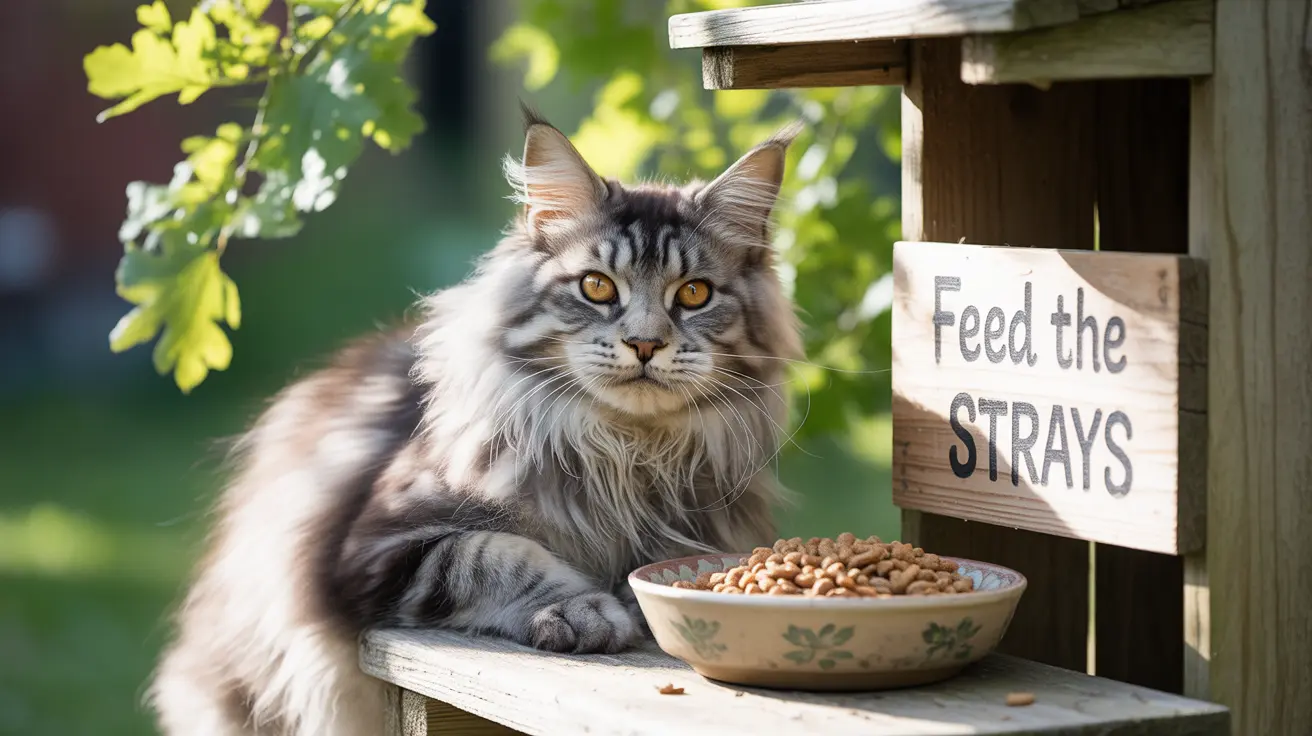When a stray cat won't leave your property, it can create a mix of concern and uncertainty. Whether you're an animal lover or simply trying to handle the situation responsibly, understanding why the cat has chosen your space and knowing the right steps to take is crucial for both the cat's welfare and your peace of mind.
In this comprehensive guide, we'll explore effective strategies for managing a persistent stray cat, from initial assessment to long-term solutions that benefit both the animal and your community.
Identifying Whether You're Dealing with a Stray or Feral Cat
Before taking action, it's essential to determine whether the cat is truly a stray or if it's feral. Stray cats are typically former pets and show signs of socialization, while feral cats are wild and avoid human contact.
Signs of a Stray Cat:
- Approaches people or homes
- Appears well-groomed
- Might meow or try to communicate
- Shows interest in human interaction
- May look confused or lost
Signs of a Feral Cat:
- Avoids human contact
- Appears unkempt
- Stays silent and hidden
- Shows defensive behavior
- Maintains distance from people
Understanding Why the Cat Chose Your Property
Stray cats are drawn to locations that provide their basic needs. If a cat won't leave your property, it's likely because it has found one or more of these essential elements:
- Food sources (whether intentionally provided or not)
- Shelter from weather and predators
- Perceived safety and security
- Potential human caregivers
- Familiar territory
Immediate Steps to Take
When faced with a stray cat that won't leave, consider these initial actions:
Check for Identification
- Look for a collar or tags
- Take photos and post in local forums
- Contact nearby veterinarians
- Have the cat scanned for a microchip
Provide Temporary Care
- Set up a feeding station away from your home
- Offer fresh water daily
- Create a simple shelter if needed
- Maintain consistent feeding times
Long-term Solutions and Management
If the cat continues to stay and no owner is found, consider these options:
Option 1: TNR (Trap-Neuter-Return)
- Contact local TNR programs
- Schedule professional trapping
- Ensure vaccination and medical care
- Return cat to familiar territory
Option 2: Adoption
- Assess the cat's socialization level
- Contact no-kill shelters and rescues
- Consider fostering or adopting yourself
- Network with local animal advocates
Working with Your Community
Managing a stray cat situation often requires community involvement:
- Inform neighbors of your plans
- Coordinate feeding schedules
- Share resources and responsibilities
- Support local TNR initiatives
Frequently Asked Questions
Why won't a stray cat leave my property and how can I tell if it's a stray or feral?
A stray cat typically stays where it finds food, shelter, and safety. You can identify a stray by its sociable behavior and well-groomed appearance, unlike feral cats which are usually fearful and unkempt.
What is the best way to safely provide food and shelter for a stray cat that won't leave?
Establish a consistent feeding schedule in a quiet area away from busy roads. Provide fresh water daily and weather-appropriate shelter, such as a covered box with straw bedding.
How can I determine if a stray cat has an owner or needs to be taken to a vet for a microchip check?
Check for collars or tags, post photos in local community groups, and take the cat to a veterinarian or shelter to scan for a microchip. You can also use a paper collar with your contact information.
What are humane options like Trap-Neuter-Return (TNR) for managing a stray or feral cat population?
TNR involves humanely trapping cats, having them spayed/neutered, vaccinated, and then returning them to their territory. This method effectively controls population growth while ensuring the cats' welfare.
When should I contact local animal shelters or rescue groups about a stray cat that stays around my home?
Contact shelters or rescue groups immediately if the cat appears injured, ill, or pregnant, or if you've been unable to locate an owner after several days of searching.
Remember, while dealing with a stray cat requires patience and dedication, taking the right steps can lead to positive outcomes for both the cat and your community. Whether through TNR, adoption, or managed care, there are humane solutions available for every situation.






